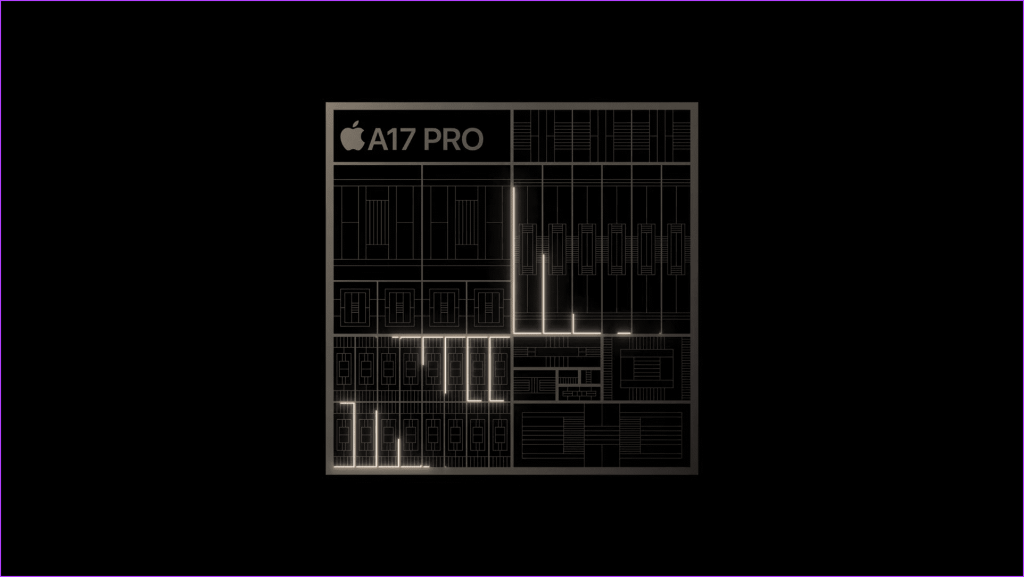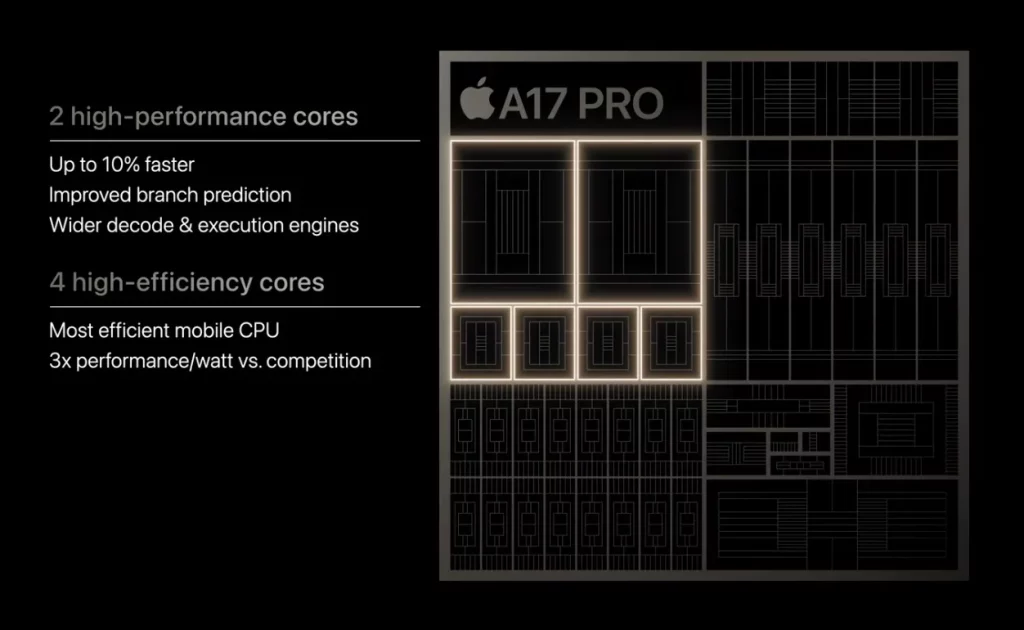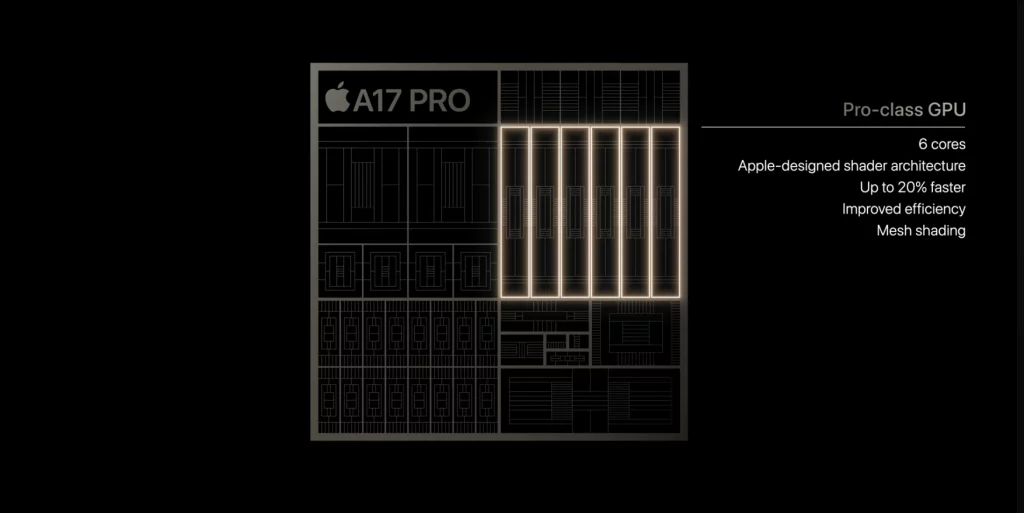When Apple announces a new chipset, it is often met with excitement around the world. This year, the A17 Pro was in the spotlight. But how does it compare to its predecessor, the A16 Bionic?
Let’s find out.
Production process
A17 Pro: The A17 Pro features the industry’s first 3-nanometer chip, manufactured on TSMC’s latest 3nm process. This nanometer reduction compared to its predecessor means that the chip can fit more transistors on the same area, resulting in improved performance and energy efficiency. To be precise, the A17 Pro contains approximately 19 billion transistors.
A16 Bionic: The A16 Bionic, which operates on a 4nm process and has about 16 billion transistors, was quite impressive in its day. However, thanks to the 3nm process, the A17 Pro is a significant step forward.

Pure performance
Processor cores: Both chips are equipped with a 6-core processor. However, the architectural improvements in the A17 Pro deliver what Apple describes as “the fastest single-threaded performance in any smartphone.”
Geekbench Insights: Benchmarks indicate a significant performance boost for the A17 Pro. Single-core performance in Geekbench shows an improvement of about 16%, and multi-core performance jumped by about 13% compared to the A16.
AnTuTu Insights: The iPhone 15 Pro Max scored 1,641,883 points in AnTuTu. It scored 392,643 points in the CPU test and 597,734 points in the GPU test. It excelled in the memory area, scoring 306,164 points, surpassing the iPhone 14 Pro Max’s score of 233,925 points.

Graphics prowess
GPU: While the A16 Bionic has a 5-core GPU, the A17 Pro has a 6-core GPU. According to Apple, this improvement results in a 20% increase in performance.
Impact on the real world: It’s not just a numbers game. The added core means better processing of high-resolution graphics, from gaming to professional graphics tasks.
In addition, the A17 Pro’s GPU includes hardware ray tracing, which greatly improves the rendering of realistic lighting and shadow effects. To be precise, the A17 Pro chip offers four times faster ray tracing performance than the A16 Bionic.

GFXBench Insights: In the GFXBench GPU benchmarks, it outperformed the A16 Bionic by a significant margin. For example, in the Aztec Ruins High Tier Offscreen test, the iPhone 15 Pro Max with A17 Pro performed about 19% better than the iPhone 15 Plus with A16 Bionic. In the Manhattan 3.1 Offscreen test, the A17 Pro showed an improvement of up to 31.5%, showing 199.8 frames per second compared to 151.9 frames per second for the A16. While not all comparisons achieved the claimed 20% increase, the A17 Pro appears to deliver a greater boost in GPU performance.
AI and neural capabilities
Neural Engine: Artificial intelligence (AI) tasks play a crucial role in modern smartphones. While both chips have a 16-core neural engine, the A17 Pro version is twice as fast, performing up to 35 trillion operations per second. This results in improved performance for artificial intelligence tasks and better optimization of photo and video shooting.
Memory and performance
RAM: The A17 Pro boasts 8GB of LPDDR5 RAM, which is 6GB more than the A16. This extra memory will help with multitasking, providing smooth transitions between apps and better performance in resource-intensive tasks.
Efficiency: The A17 Pro’s 3nm process technology improves energy efficiency, allowing it to perform tasks with lower power consumption. This results in longer battery life and reduced heat generation, ensuring that the device stays cool during demanding operations.
Improved image signal processing (ISP) engine
Photonic Engine: The A17 Pro has an advanced image signal processor, including the new Photonic Engine and Smart HDR 5, which delivers improved photo and video quality compared to the A16 Bionic.
Mesh shading: It also introduces Mesh shading, which allows you to shoot 2.8K video at 60fps in cinematic and action modes, surpassing the A16’s 30fps limit. In addition, the A17 Pro captures 48MP HEIF images in addition to 48MP Pro RAW images.
Connectivity and additional features
USB 3 performance: The A17 Pro supports the USB 3 interface for iPhone, allowing for data transfers of up to 10Gbps, a significant step up from the 480Mbps of the A16 Bionic.
Media engines: The A17 Pro also stands out with the addition of an AV1 decoder, which is expected to improve the quality of video streaming on new iPhones.
The A17 Pro builds on the A16 Bionic with a number of enhancements and improvements that strengthen its position as a formidable competitor in the mobile chipset industry.
The importance of these improvements may vary from user to user, but for those seeking the highest performance, the A17 Pro sets a new standard in the ever-evolving smartphone industry.











